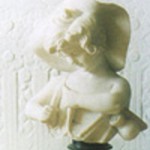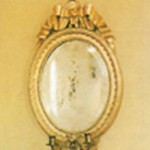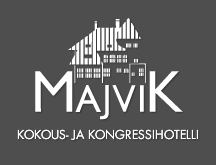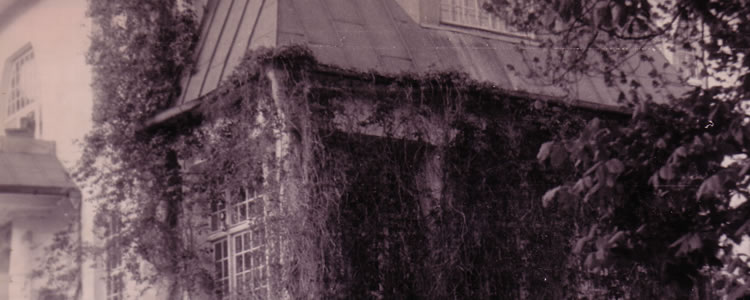History
The building of Majvik
Professor Arthur Edvard af Forselles
(1864–1953)
Doctor of Medical Sciences, the first professor of otorhinolaryngology at the University of Helsinki, founder of the Department of Otorhinolaryngology, community leader and member of the Finnish Parliament.
At the end of the 19th century, Professor Arthur Edvard af Forselles purchased Majvik in Masala, Kirkkonummi as a summer place for his family. He had been offered part of Kulosaari, an island east of Helsinki, as a summer place, but he considered it to be too big for his family, which had two children, at the time.
The first building at Majvik was called ”Lilla villan”, which was a small red cottage located where the main building is currently located. His family spent their first summer there while they were building their Art Nouveau castle. Af Forselles wrote his dissertation in this same wood cottage. Later on, Lilla villan was converted into the estate keeper’s residence. During Finland’s Winter War, the building served as a bomb shelter.
It is uncertain as to who built the old main building at Majvik or when it was built. In 1902, the famous trio of Finnish architects, Gesellius-Saarinen-Lindgren, built their own residence that also served as their atelier at Hvitträsk, which is located a few kilometres west of Majvik. Both Hvitträsk and Majvik have the same solutions and ornamentation that is typical of Art Nouveau: large and small windows of irregular shapes, the upper portions of windows curved, lavishly decorated columns and vaults, borders with animal and plant motifs on walls. There is good reason to believe that one of the architects of Hvitträsk, more than likely Armas Lindgren, was also responsible for designing Majvik and that the main building was built during the period of time between 1904 and 1908. The name of the architect, however, is not mentioned on the drawings.
The foundation for the main building is made of granite boulders, while its walls are made of brick and wood. The tower is built of brick that was brought to the site by ship from the Bastvik Brick Factory located on the other side of Espoonlahti.
At first, the villa was supposed to be located farther down on the hillside, in the area along the road leading to Majvik and next to a prominent rock formation. In the end, however, the top of the craggy hill, called Berga, was selected as the building’s current location.
Objects of value
Af Forselles travelled extensively. He drove an Opel he had purchased from Nikolajev over the Alps to Italy — a veritable achievement considering the unpredictable state of automobiles and roads back then. Af Forselles always brought back souvenirs to Majvik from his trips.
Most of the objects currently on display in the main building are either from the time when the af Forselles lived there or from the Weckman family. Particularly noteworthy are the 18th century mirror in the drawing room and the Estonian travelling trunk on the upper floor. Other valuable objects include the baroque furniture in the dining room and the Rosenthal dinner service, which has more than 100 pieces.


Hidden Safes
The af Forselles family and the Weckmans only stayed at Majvik during the summer and in winter, thieves would often break into the house. Aware of the problem, af Forselles himself built various alarms and secret safes in the main building, where the most valuable items were stored when the members of the household were away.
In fact, when the Porkkala area was leased to the Soviet Union from 1944 to 1956, the objects in one safe, including drawings of Majvik, were not found. When the Weckman’s housekeeper was leaving Majvik before it was to be handed over to the Soviets, she put her wooden clogs in one of the safes. When she returned, she was overjoyed to find her clogs where she had left them. Later on, she would have reason to remember the old proverb: “Where you leave your shoes, you will return later.”

